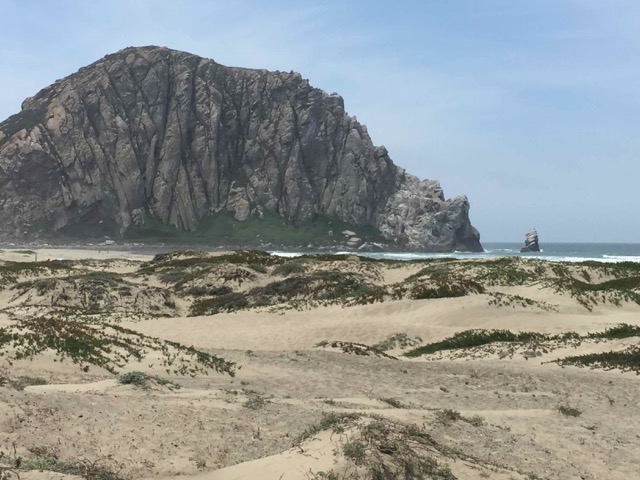A stalwart sentry known as Morro Rock stands 576 feet above the rolling waves of the Pacific Ocean at the mouth of Morro Bay. It has protected this bay and its inhabitants for thousands of years. The Native American Chumash tribe first inhabited this area as hunting and fishing grounds from as early as 4700 B.C. Today’s visitors to Morro Dunes Travel Trailer and Resort Campground can still gaze at its majestic stand against the sea and experience the same awe as their ancient predecessors.
An ancient volcanic cone, Morro Rock is one of nine peaks known as the “Nine Sisters” found close together in a row extending from the coastline of San Luis Obispo County at Morro Bay southeasterly to the City of San Luis Obispo. At its base Morro Rock still covers 50 acres even though the rock was used as a source of materials for breakwaters throughout the state until the volcanic cone was declared a State Historical Landmark in 1968. Now it is also a refuge for the endangered Peregrine Falcon. You may be lucky enough to spy one during your stay.
Travelers have journeyed here ever since to view this unique and interesting natural phenomenon along with the many other attractions to be found in the area.
While staying in Morro Bay, plan for a day trip to drive 26-miles north along the Central Coast on Highway 1 for a visit to Hearst Castle. Tour the home, the grounds or both for a historical experience you won’t soon forget. Just north of Hearst Castle, from June 15 to August 31 you can take a tour to view the Piedras Blancas Light Station established in 1875. There are also elephant seals to watch along the beaches fronting Highway 1 in San Simeon from April through August.
Back in Morro Bay, there is an annual kite festival or an antique car show in April you may want to consider. Take one precaution as you plan your trip-call ahead and reserve your campsite. The campground books up early each year and this is one spot you will want to plan for long in advance.
